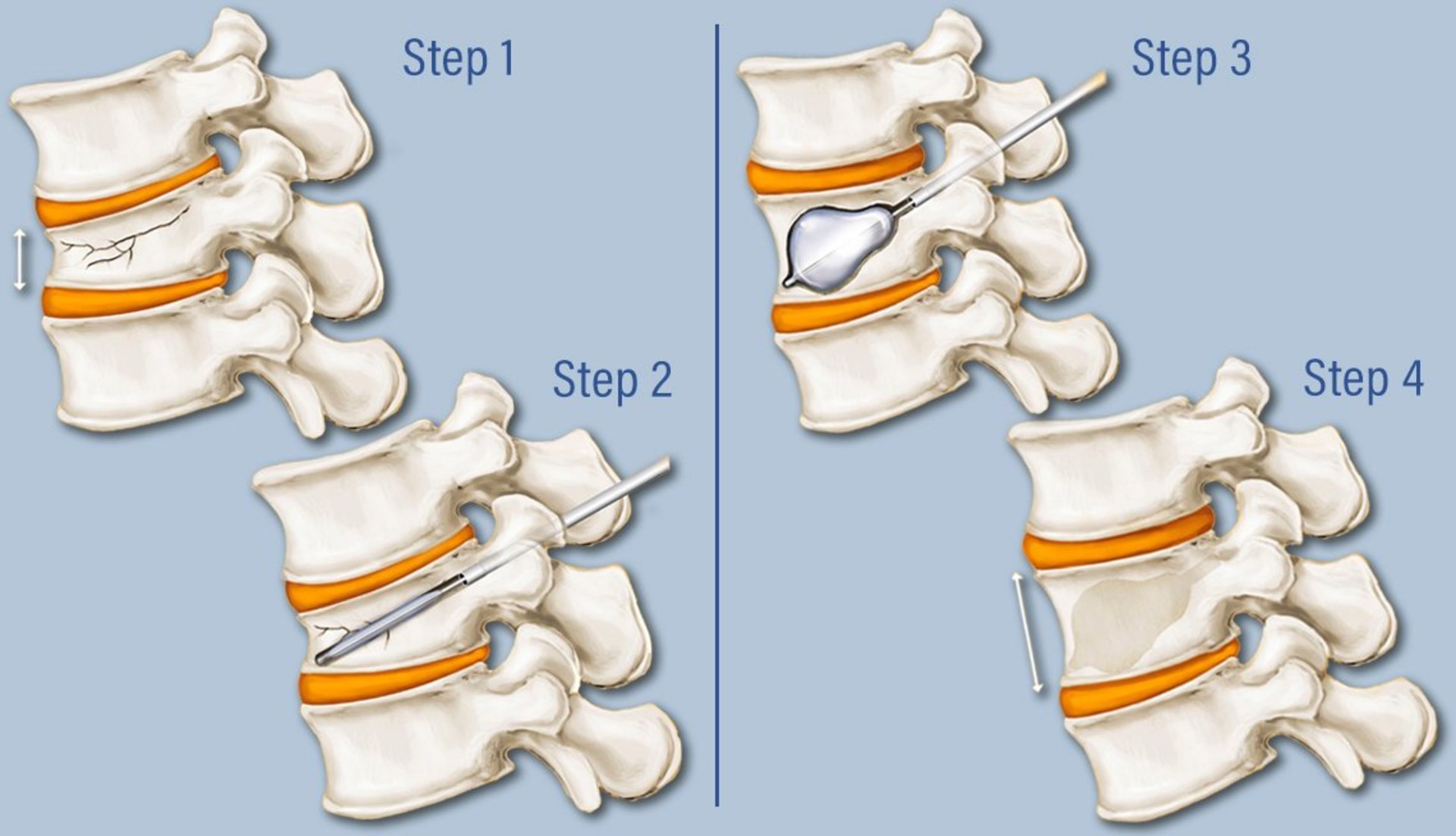Kyphoplasty
What is a Kyphoplasty?
Kyphoplasty is a procedure used to treat certain fractures in vertebrae, or bones of the spine. In a kyphoplasty procedure the surgeon injects special cement into the patient’s vertebrae — with the additional step of creating space for the treatment with a balloon-like device (balloon vertebroplasty). Kyphoplasty can restore a damaged vertebra’s height and may also relieve pain.
What is a Kyphoplasty used to treat?
Kyphoplasty is used to treat painful compression fractures in the spine. In a compression fracture, all or part of a spine bone collapses. Compression fractures of the spine generally occur from too much pressure on the vertebral body. This usually results from a combination of bending forward and downward pressure on the spine. A common cause of compression fractures is osteoporosis.
Description of Procedure
Kyphoplasty KP is a relatively new procedure that was first performed in California in 1998. It is a minimally invasive percutaneous procedure that involves the insertion of an inflatable bone tamp into the fractured vertebral body under fluoroscopic guidance. The bone tamp is then inflated, elevating the endplates and restoring the vertebral body toward its original height. The procedure has been shown to speed up the treatment and recovery period of vertebral compression fractures.
Risks & Benefits of Kyphoplasty
Studies continue to show that kyphoplasty is a relatively safe surgery for helping to restore vertebral height, correct kyphosis deformity, and eliminate pain caused by compression fractures. The overall risk for kyphoplasty-related complications is estimated to be less than 4%. Even though complications are rare, they can potentially be serious and must be considered before agreeing to have kyphoplasty.
potential complications of procedure
Some general surgical risks apply to kyphoplasty, including infection, excessive bleeding, and/or a negative reaction to anesthesia. Other risks that are more specific to the kyphoplasty procedure include:
Bone cement leakage. Sometimes the injected bone cement moves beyond the vertebral compression cracks for which it was intended, but this rarely causes any complications even when it occurs. Compared to a similar procedure called vertebroplasty, kyphoplasty has a lower risk for cement leakage but does not appear to have a lower risk for complications. While bone cement is injected with less pressure during kyphoplasty (and thus more likely to stay within the space of the inflated balloon), the cement leakage that occurs more often with vertebroplasty is still typically minor and unlikely to cause symptoms.
Paralysis. This serious but extremely rare complication can occur in various ways during kyphoplasty if the spinal cord or a nerve root becomes damaged. For example, paralysis could result from a malpositioned instrument during the surgery, or from bone cement that excessively leaks onto the spinal cord or a nerve root.
Pain persists or worsens. In some cases, kyphoplasty either fails to relieve the pain or results in worse pain or other symptoms. For example, if bone cement leaks onto a nerve root or the spinal cord, it could potentially cause worsened symptoms of pain, tingling, numbness, and/or weakness.
Pulmonary embolism. If bone cement gets into a vertebral vein, it can potentially travel to the lung and cause an artery obstruction.
Allergic reaction to bone cement or other agents. It is possible to have an allergic reaction to one of the agents used in kyphoplasty, such as the bone cement (PMMA) or the solution used to see the balloon via x-ray.





